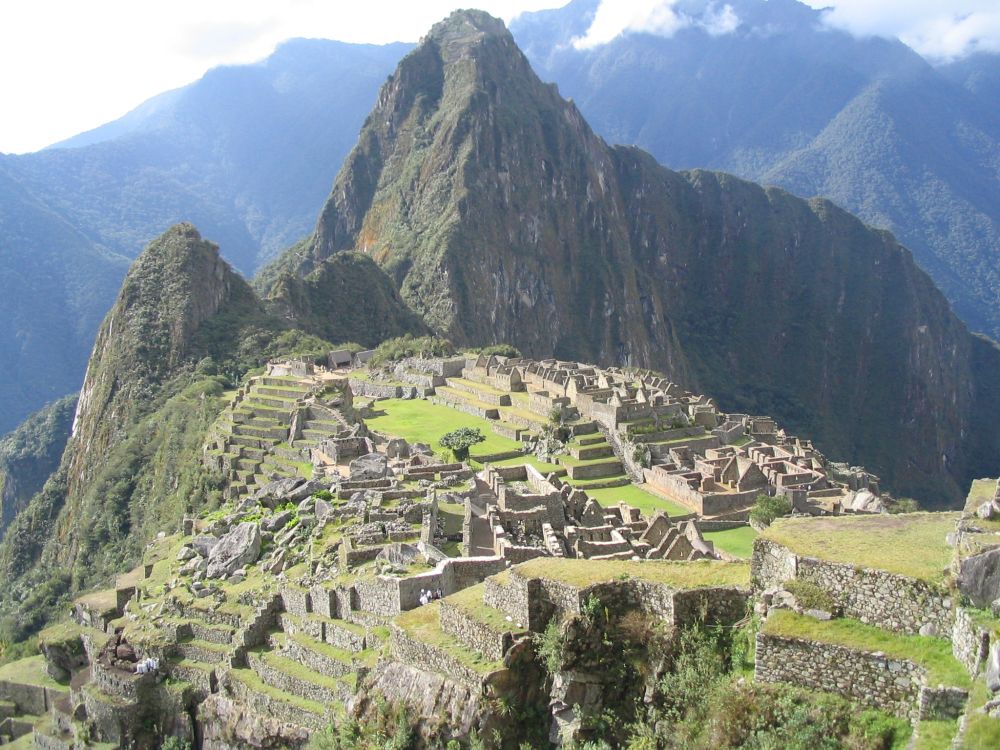|
Inca
The early South American civilizations reached their zenith with the Inca empire (AD 1200 to 1532). The Inca were a highly organised and efficient civilization. The empire was governed and administered from the city of Cuzco, laying at an altitude of 11,000 feet in the Peruvian highlands.
The city of Cuzco was the center of the Inca world and the base of Inca power. It was the religious as well as the administrative center of an empire with a population of up to 6 million people, spanning at least 2500 miles, making it the largest in pre-Hispanic America. Their system of government ensured each citizen paid taxes which was used, amongst other things, to construct an elaborate 10,000 mile road network, radiating from Cuzco, despite the fact that the Inca did not have access to the wheel! In fact Llama were the main mode of transport.
The taxes also funded the well organised Inca army, estimated to have been up to 40,000 strong. The army was vital in enforcing the Inca system of government on the rapidly expanding empire, combating hostilities, dissenters and uprisings on an ongoing basis.

The Inca skills and talents allowed them to build enormous fortresses in strategically positioned locations on the edges and tops of mountains. Their talents also extended to agriculture. They managed to successfully cultivate and irrigate their crops despite the inhospitable mountain terrain.
The Inca civilization was considered to be the most spectacular in ancient South America. But it was also one of the most short-lived. The Inca army was no match for the Spanish conquistadores, led by Pizzaro in the 1530s, despite the fact that Pizzaro had only about 180 men. They were defeated by a combination of reasons. Diseases introduced into South America by the Spanish ravaged the army as well as the local population. As well as that the Spanish had superior weapons including guns and horses, which were more than a match for the Inca slings and spears.
Also Pizzaro managed to make allies of tribes previously subjugated by the Inca, thereby strengthening his forces. This along with the fact that the whole empire was in the complete control of just one leader, one individual, with no other autonomy in this vast empire, meant that the outcome was inevitable. Once the leader was captured and slain, the Inca people were powerless.
The Inca rulers were finally overthrown by Pizzaro in 1532. After the defeat some Inca retreated to Machu Picchu (city in the clouds), a fortified city high up in the Andes where they survived undisturbed. The Spanish, who went on to pillage many Inca sites failed to find this stronghold, though Pizzaro did come close. The site didn't evade Hiram Bingham who came across it in 1911. But did the Inca build Machu Picchu or just reside there, thankful for the hiding place provided, by some impressive race that predated them. Unfortunately no written records survived to explain the history and so much of the Inca heritage has disappeared. Looters, beginning with the Spanish and continuing to this day have obliterated it.
|

